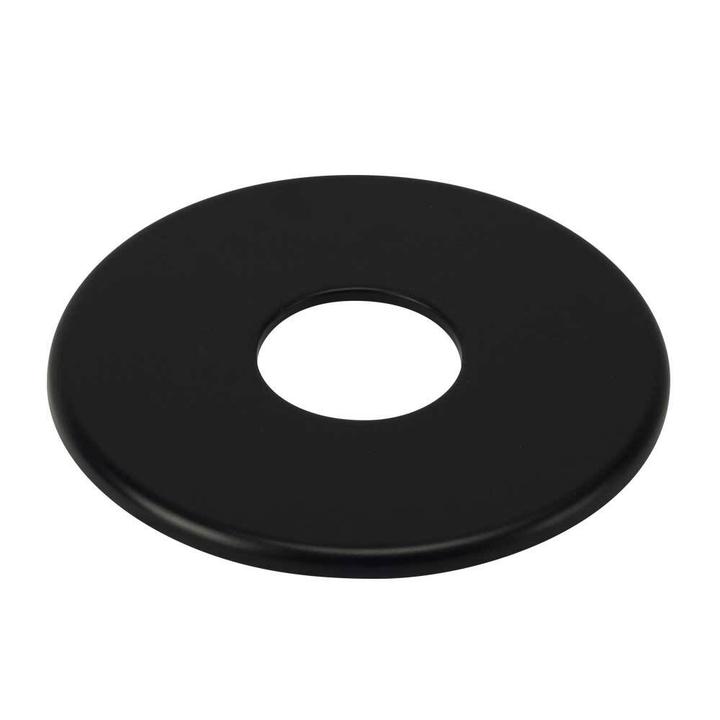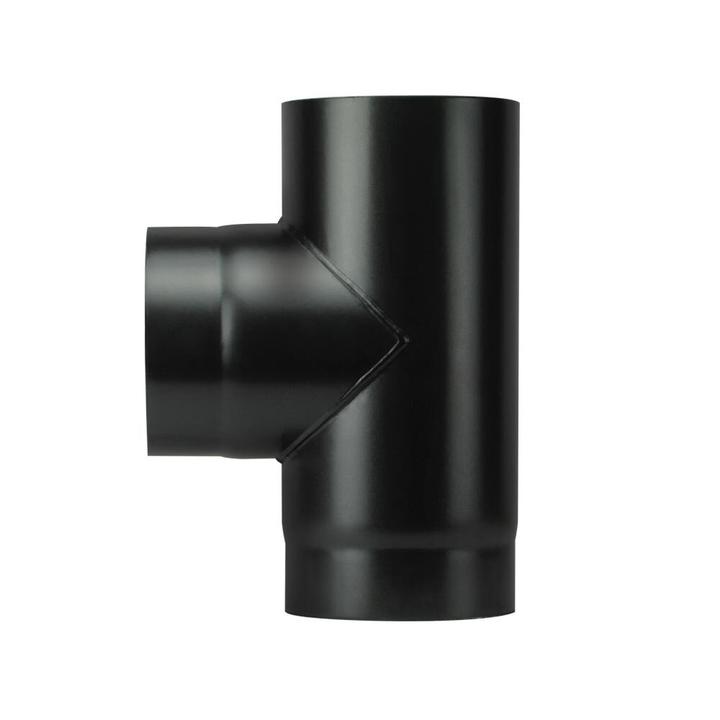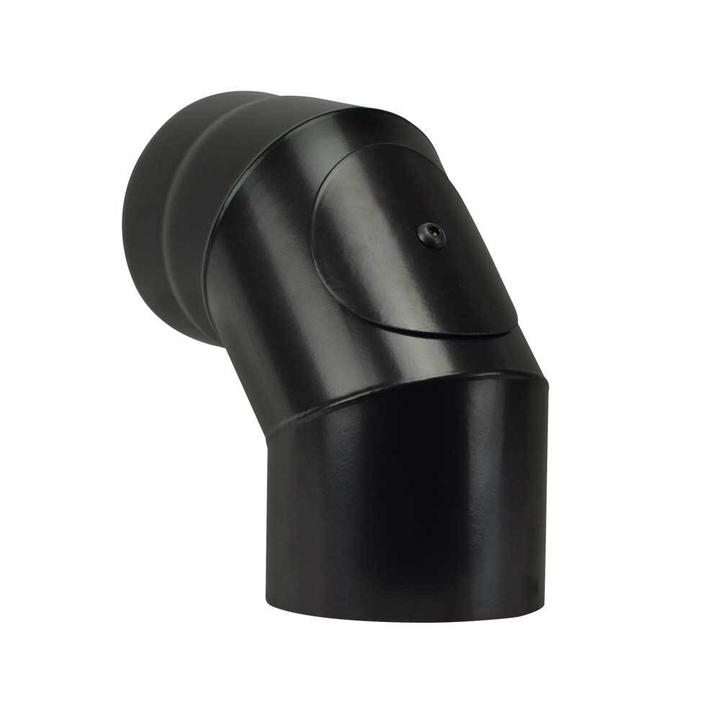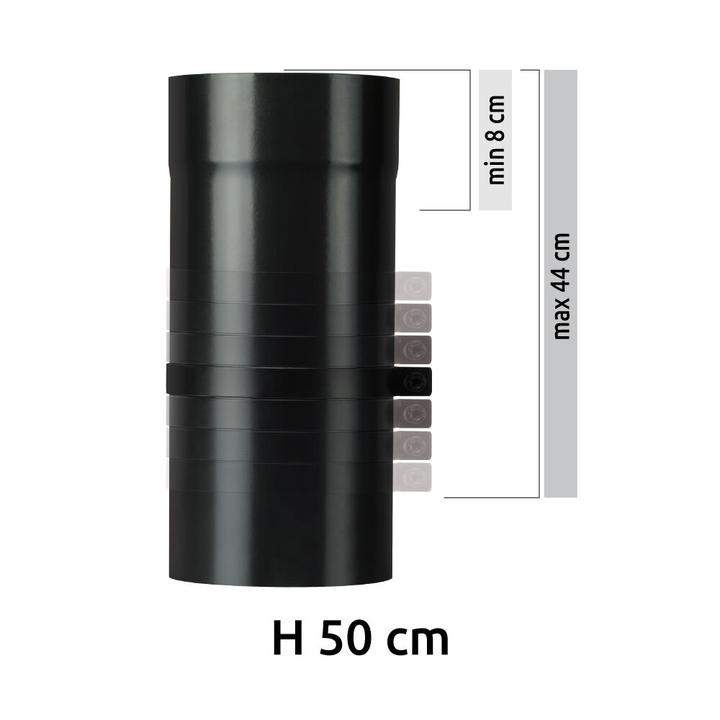Vitrified flue pipe
Vitrified flue pipes are used to connect the appliance to an outside flue. These pipes are coated with molten glass, which gives them a smooth, glossy appearance similar to a ceramic glaze. The vitrified coating is a layer of molten glass that is applied to the outside of a steel tube by a high-temperature firing process. The molten glass adheres to the steel evenly. It also provides a smooth surface that is resistant to soot adhesion. Vitrified flue pipes offer a number of benefits: better heat retention and greater thermal insulation than conventional stainless steel pipes. This translates into greater energy efficiency and reduced heat loss.
The advantages of vitrified flue pipes are as follows:
- Heat retention. These pipes retain more heat than stainless steel pipes, which can increase the energy efficiency of the wood stove and reduce wood consumption.
- Greater thermal insulation. They offer greater thermal insulation than stainless steel tubes, which helps reduce heat loss and keep the home warmer longer.
- Aesthetics. The glazed finish of vitrified chimney pipes provides a sleek, aesthetic look that can complement the home’s décor.
The disadvantages of vitrified chimney pipes are as follows:
- Cost. Vitrified flue pipes are generally more expensive than stainless steel pipes.
- Maintenance. Vitrified chimney pipes require regular maintenance to prevent the buildup of soot and other debris that can damage the glass liner.
- Fragility. Vitrified flue pipes are more fragile than stainless steel pipes and can break if handled with force.
Stainless steel flue pipe
Stainless steel flues are flues designed to connect to an outdoor flue outlet. These pipes are made of stainless steel, a corrosion-resistant material that has a long service life and requires little maintenance. Stainless steel is a type of steel alloy containing chromium and other metals. This material is resistant to corrosion and rust. Stainless steel chimney pipes are available in different thicknesses and grades, making them suitable for a wide variety of applications and environments. Some models also include a thermal insulation layer that helps prevent water vapor condensation and improves the energy efficiency of the wood stove.
The advantages of stainless steel chimney pipes are as follows:
- Corrosion resistance. Stainless steel is a corrosion and rust resistant material. It guarantees a long service life for the chimney pipe.
- Durability. Stainless steel chimney pipes are durable and resistant to high temperatures.
- Low maintenance. They require little maintenance and cleaning, which facilitates their use and prolongs their useful life.
- Good value for money. Although they can be more expensive than other types of chimney pipes, stainless steel pipes offer good value for money due to their durability and low maintenance.
The disadvantages of stainless steel chimney pipes are as follows:
- Lower heat retention. They do not retain as much heat as vitrified pipes, which can result in lower energy efficiency of the wood stove.
- Lower thermal insulation. They have less thermal insulation than vitrified tubes, which can increase the amount of energy needed to heat the home.
Which is better for your stove?
The choice of chimney type depends on individual needs and preferences. Both types of flue, stainless steel and vitrified, have their advantages and disadvantages.
If energy efficiency and thermal insulation are a priority, vitrified flue tubes are the best choice. These pipes retain more heat than stainless steel pipes, which increases the energy efficiency of the wood stove and reduces wood consumption. They also offer greater thermal insulation, which helps reduce heat loss and keep the home warmer for longer.
However, if durability and low maintenance are a priority, stainless steel chimney pipes are a good choice. Stainless steel is a corrosion and rust resistant material, which ensures a long life for the chimney pipe. They also require little maintenance and cleaning.
Our suggestions are the following:
- The wood-burning stoves is usually placed in living spaces, so it also becomes a part of interiors, then the aesthetics should be the prioriry, so the best option is to use the vitrified flue pipes;
- Wood boilers, wood monoblocks, wood fireplaces and wood inserts should be installed using stainless steel flue pipes.













































